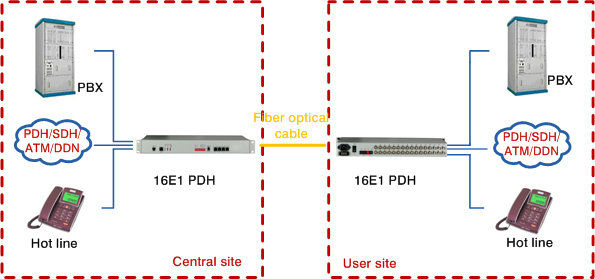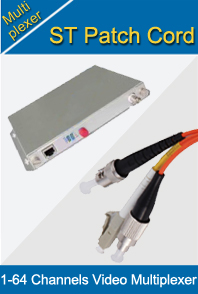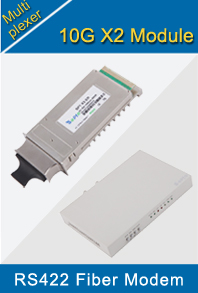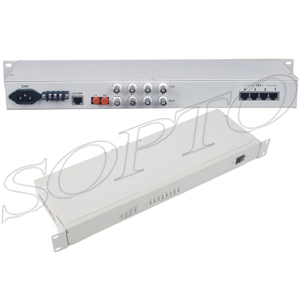-

- Sopto Home
-

- Special Topic
-

- Multiplexer Knowledge
-

- Multiplexers in Communication
Multiplexer Knowledge
- Why is Multiplexing Needed in Data Communication Systems?
- What is Concept of Multiplexing in Telephone System?
- What is Digital TV Frequency?
- Outlook of the WDM Networks
- DWDM Technical Overview
- CWDM Technical Overview
- How to Activate Cable Modems?
- How to Install a Fiber Optic Modem?
- How do I Choose a Best Fiber Modem?
SOPTO Special Topic
Certificate



Guarantee
Except products belongs to Bargain Shop section, all products are warranted by SOPTO only to purchasers for resale or for use in business or original equipment manufacturer, against defects in workmanship or materials under normal use (consumables, normal tear and wear excluded) for one year after date of purchase from SOPTO, unless otherwise stated...
Return Policies
Defective products will be accepted for exchange, at our discretion, within 14 days from receipt. Buyer might be requested to return the defective products to SOPTO for verification or authorized service location, as SOPTO designated, shipping costs prepaid. .....
Applications
Multiplexers can be used to connect PBX, Hot line and other devices of network from central site to user site through fiber optical cable.
SOPTO Products
- Fiber Optic Transceiver Module
- High Speed Cable
- Fiber Optical Cable
- Fiber Optical Patch Cords
- Splitter CWDM DWDM
- PON Solution
- FTTH Box ODF Closure
- PCI-E Network Card
- Network Cables
- Fiber Optical Adapter
- Fiber Optical Attenuator
- Fiber Media Converter
- PDH Multiplexers
- Protocol Converter
- Digital Video Multiplexer
- Fiber Optical Tools
- Compatible
Related Products
Performance Feature
High integration desig
Low power consumption
Good EMC, EMI
Stable and Reliable
Multiplexer Knowledge
Recommended


Multiplexers in Communication
A multiplexer, sometimes referred to a multiplexor or simply a mux, is an electronic device that selects from several input signals and transmits to one or more output signals, can be considered as a multiple-input, single-output switch. A Phone Optical Multiplexer is an example of a very large virtual multiplexer that is built from many smaller, discrete ones. An electronic multiplexer makes it possible for multiple signals to share one device or resource, for example, one A/D converter or one communication line, instead of having one device per input signal.
Multiplexers connect or control, multiple input lines called “channels” consisting of 2, 4, 8 or 16 individual inputs, one at a time to an output. A multiplexer is often used with a complementary demultiplexer on the receiving end. A demultiplexer (or demux) is a single-input, multiple-output switch. At the receiving end, a demux, chooses the correct destination from the many possible destinations by applying the same principle in reverse.

Generally, multiplexers are used as one method of reducing the number of logic gates required in a circuit or when a single data line is required to carry two or more different digital signals. It selects one of many analog or digital input signals and forwards the selected input into a single line. A multiplexer of 2n inputs has n select lines, which are used to select which input line to send to the output.
Multiplexers also are used in building digital semiconductors such as central processing units (CPUs) and graphics controllers. In these applications, the number of inputs is generally a multiple of two, the number of outputs is either one or relatively small multiple of two, and the number of control signals is related to the combined number of inputs and outputs.
In its simplest form, a multiplexer will have two signal inputs, one control input and one output. One example of an analog multiplexer is the source control on a home stereo unit that allows the user to choose between the audio from a compact disc (CD) player, digital versatile disc (DVD) player and cable television line.
There are some more complex forms of multiplexers. Time-division multiplexers(or TDM), for example, have the same input/output characteristics as other multiplexers, but instead of having control signals, they alternate between all possible inputs at precise time intervals.
Alternatively, a digital TDM multiplexer may combine a limited number of constant bit rate digital data streams into one data stream of a higher data rate, by forming data frames consisting of one timeslot per channel. Time-division multiplexers generally are built as semiconductor devices, or chips, but they also can be built as optical devices for fiber optic applications.
PDH Multiplexer designs for highly integrated structure and provides 16 standard E1 interfaces together with one channel of order wire, with self-contained alarm and NM functions, as well as self-testing and E1 loop-back testing functions.
While, digital multiplexer is constructed from individual analogue switches encased in a single IC package as opposed to the “mechanical” type selectors such as normal conventional switches and relays.
For more multiplexers’ info, please browse our website or contact a Sopto representative by calling 86-755-36946668, or by sending an email to info@sopto.com.



